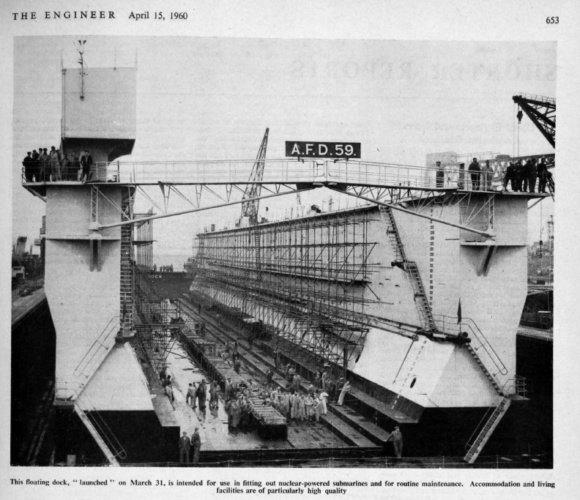April 1960 - The Admiralty floating dock
The advent of nuclear propulsion required a new class of floating dry dock and in April 1960 The Engineer's naval correspondent visited Plymouth to report on the launch of a key new facility for the Royal Navy. Written by Jason Ford.

Dry docks can be traced back to the Greco-Roman world when Phoenicians were observed to have dug a trench and filled it with props and beams to accommodate a vessel.
The trench was flooded, the vessel guided to its temporary moorings and the water then pumped out. Et voila, the dry dock was born.
But what about those occasions when a boat needs repairs and a dry dock is not available? The solution is to take the dry dock to the vessel in the form of a floating dry dock, as witnessed in 1869 when such a vessel was constructed in England and towed to Bermuda.
Floating dock Bermuda was the first Admiralty Floating Dock (AFD) and in April 1960 The Engineer’s naval correspondent reported on the 59th such vessel, which was capable of lifting all existing destroyers and frigates but was specifically designed with nuclear-powered submarines in mind.
Register now to continue reading
Thanks for visiting The Engineer. You’ve now reached your monthly limit of premium content. Register for free to unlock unlimited access to all of our premium content, as well as the latest technology news, industry opinion and special reports.
Benefits of registering
-
In-depth insights and coverage of key emerging trends
-
Unrestricted access to special reports throughout the year
-
Daily technology news delivered straight to your inbox










CCC Report Finds UK Climate Targets Still Within Reach
In 1990 67% of the UK´s electricity came from coal-fired power stations and even without renewables the transition to gas was a major contributor to...